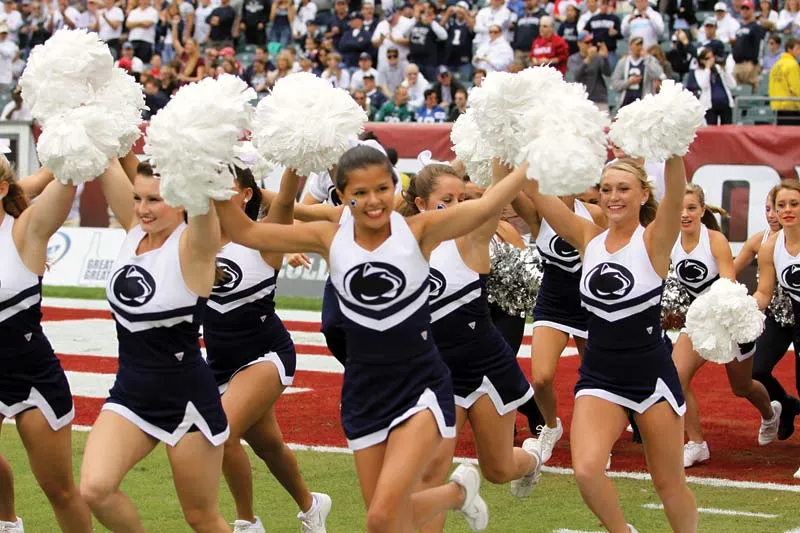zoomacademia.com – Cheerleading is a unique sport that combines athleticism, dance, gymnastics, and teamwork to energize crowds and showcase incredible stunts. While traditionally associated with cheering for sports teams, it has evolved into a competitive sport in its own right, requiring immense physical skill, mental focus, and synchronization.
The Origins of Cheerleading
Cheerleading began in the late 19th century in the United States. It originated as a way to motivate crowds during college football games. The first official cheerleader, Johnny Campbell, led the crowd in organized chants at the University of Minnesota in 1898. Over the years, cheerleading grew to incorporate more athletic elements, including stunts and acrobatics, as it became popular in schools and universities across the world.
Types of Cheerleading
There are two main types of cheerleading:
- Sideline Cheerleading
- Performed during sports games to support teams and entertain spectators.
- Focuses on chants, crowd interaction, and simple stunts.
- Competitive Cheerleading
- Teams perform routines at competitions, judged on stunts, tumbling, dance, and overall synchronization.
- Routines typically last 2-3 minutes and include high-energy, high-difficulty maneuvers.
Elements of Cheerleading
Cheerleading is a multifaceted sport that requires a combination of skills:
- Stunts: Pyramids, basket tosses, and lifts where athletes work together to create visually impressive formations.
- Tumbling: Gymnastic movements such as backflips, handsprings, and somersaults add an element of athletic flair.
- Jumps: Explosive moves like toe touches and pikes showcase flexibility and power.
- Dance: High-energy dance routines are an integral part of performances, emphasizing rhythm and expression.
- Cheers and Chants: Vocal elements aim to engage the crowd and build team spirit.
Physical and Mental Demands
Cheerleading is one of the most physically demanding sports. It requires strength, flexibility, endurance, and agility to perform high-intensity stunts and routines. Athletes must also develop trust and communication within their teams to execute complex stunts safely.
In addition to physical requirements, cheerleaders face mental challenges. Confidence, focus, and the ability to perform under pressure are essential, especially during competitions or in front of large crowds.
Is Cheerleading a Sport?
The debate over whether cheerleading is a sport has existed for years, but most recognize it as one. The International Olympic Committee (IOC) granted provisional recognition to cheerleading in 2021, solidifying its legitimacy. Competitive cheerleading meets all the criteria of a sport: organized teams, standardized rules, and the need for skill, practice, and strategy.
The Role of Cheerleading in Society
Cheerleading has grown beyond its roots in school spirit. It’s now a global phenomenon, with millions of athletes participating in recreational, professional, and competitive teams. Cheerleaders inspire audiences, foster teamwork, and promote fitness and discipline.
Moreover, cheerleading has become a symbol of empowerment. Many programs emphasize leadership, self-confidence, and community involvement, breaking stereotypes and showing that cheerleading is about more than pom-poms and sideline chants.
Conclusion
Cheerleading is a dynamic and thrilling sport that combines artistry, athleticism, and enthusiasm. From its humble beginnings as crowd motivation to its current status as a competitive sport, it has captured the hearts of millions around the world. Whether on the sidelines or the competition mat, cheerleading exemplifies teamwork, determination, and the spirit of celebration.







